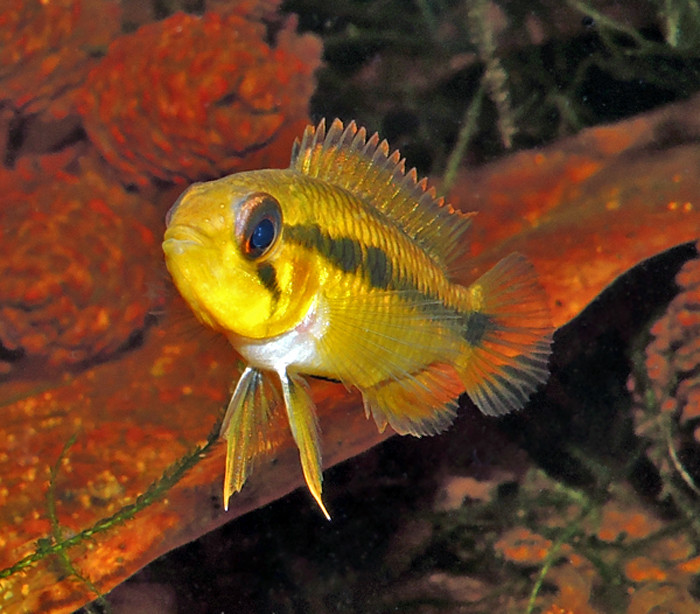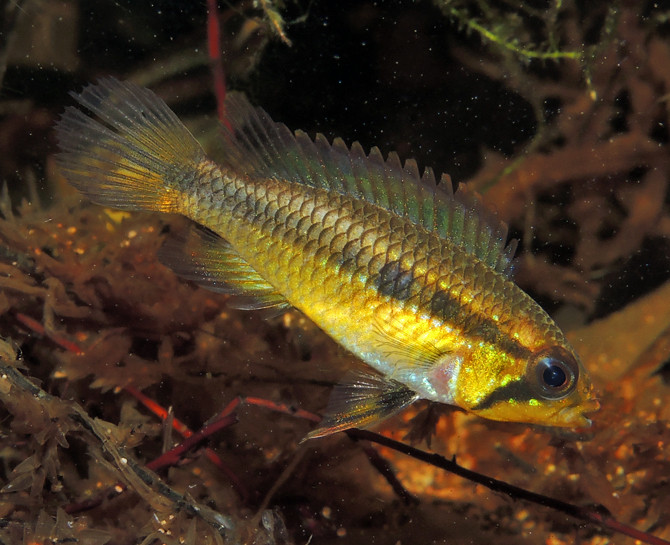- Messages
- 11,220
- Location
- Denver, Colorado, U.S.A.
Kullander originally considered A. gephyra to be close to A. pertensis, partly based on the lack of dark pigment on the 1st spines of the dorsal and ventral fins.

Thanks for the info - so A. gephyra is considered a 'bridge' species between A. agassizii and A. pertensis? as I recall reading somewhere.
I've looked through a list of 140 of Kullander's publications but I cannot see any reference to his description of A. gephyra.
Gotta be out there somewhere...the search continues.
Thanks Mike, found it online here.Once is was, but not now.
Kullander, S. O. 1980. A Taxonomical Study of the Genus Apistogramma Regan, with a Revision of Brazilian and Peruvian Species (Teleostei: Perciformes: Cichlidae). Bonner Zoologische Monographien, Nr. 14. p. 131-134.
And, yes it's an ichthyological taxonomist's treasure.I don't think it's in publication anymore, so you can only find it second hand. On a side note the monograph was published with 'perfect binding' (like a paperback novel), but it was far from perfect. My copy instantly started to fall apart, so I had it hard bound back in 1987.

